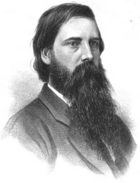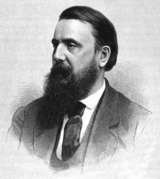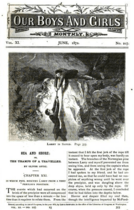- This page was last modified on 17 October 2025, at 10:18. Suggest an edit.
Lee & Shepard facts for kids
Lee & Shepard was a well-known company in Boston, Massachusetts. It was a publisher and a bookseller. This means they printed books and sold them to people. William Lee (1826–1906) and Charles Augustus Billings Shepard (1829–1889) started the company in 1862.
The company had offices in different parts of Boston. Around 1872, they were at 149 Washington Street. From 1873 to 1885, they were at the corner of Franklin and Hawley Street. Later, around 1885, their office was at 10 Milk Street, right next to the historic Old South Meeting House.
Early Books and Authors
Lee & Shepard published many interesting books. One of their very first books was a diary by Adam Gurowski. In 1862, the New York Evening Post newspaper reviewed it. They said it was a book that should be read carefully. They described it as having a "nutritive nut" under its "rough and prickly burr." This means it might have seemed a bit difficult at first, but it contained valuable ideas.
Many popular authors worked with Lee & Shepard. Some of these writers included:
- George Melville Baker
- Sophie May
- Henry Morgan
- Oliver Optic
- William Carey Richards
- Francis Henry Underwood
- Madeline Leslie
- Levina Buoncuore Urbino
These authors wrote books on various topics. They helped Lee & Shepard become a successful publishing house.
Company Changes Over Time
In 1905, Lee & Shepard joined with another company called the Lothrop Company. Together, they formed a new company called Lothrop, Lee & Shepard.
Later on, Lothrop, Lee & Shepard was bought by William Morrow and Company. Then, in 1999, William Morrow and Company was bought by HarperCollins. After this, Lothrop stopped publishing books for children. Today, Lothrop is an "imprint" of HarperCollins. An imprint is like a brand name or division within a larger publishing company.
Images for kids
-
Display booth of Lee & Shepard at the exhibition of the Massachusetts Charitable Mechanic Association, held in Mechanics Hall, on Huntington Avenue, Boston, 1881







